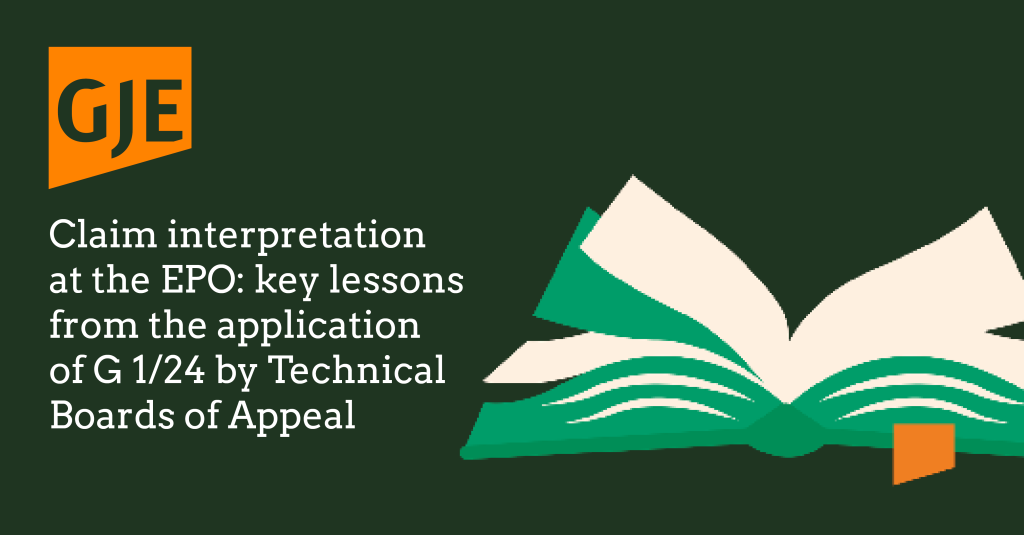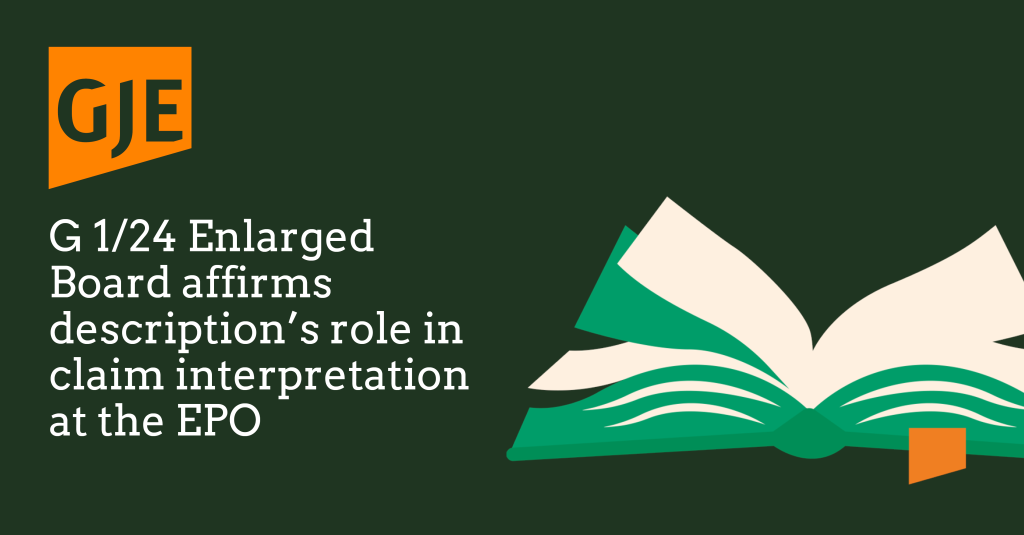
An EPO Board of Appeal has confirmed that patent claims can be interpreted to have a broader scope when consulting the description than a strict literal reading of the claim would give, when assessing the patentability of an invention.
Following G 1/24, the description and drawings shall always be consulted to interpret the claims when assessing the patentability of an invention at the EPO. The recent Board of Appeal decision in T 1849/23 found that a claim can be interpreted to be broader than a possible strict literal reading of the claim in isolation when the description is taken into consideration, in accordance with G 1/24.
This published decision contrasts with most of those published so far that apply the principles of G 1/24, because it assesses whether the description can be used to broaden the claim scope when assessing patentability. The majority of previous decisions applying G 1/24 have involved a patent proprietor arguing that a narrower claim scope should be applied in view of the description.
Legal background: claim interpretation when assessing patentability
There is no article of the European Patent Convention providing a legal basis for claim interpretation when assessing patentability. However, in G 1/24, the Enlarged Board of Appeal held that the claims are the starting point and the basis for assessing the patentability of an invention under Articles 52 to 57 EPC and that the description and drawings must always be consulted to interpret the claims when assessing patentability. Furthermore, the Enlarged Board confirmed that the applicable principles of claim interpretation can be extracted from the existing body of EPO case law.
For a more detailed summary of G 1/24, please see our previous article.
Case background: T 1849/23
The patent in T 1849/23 was EP3166825 and the claimed invention in question related to a trailer oscillation and stability control device. The relevant features of the claim for the purposes of this review were:
1.1 A trailer oscillation and stability control device comprising:
1.3 an angular rate sensor positioned and configured to measure rate of angular trailer deflection
1.3.1 about a hitch pivot point and
1.3.2 to generate corresponding angular trailer deflection rate signals.
The Opposition Division had maintained the patent and concluded that the prior art did not disclose features 1.3.1 (and consequently 1.3.2).
Broader interpretations possible when the description is taken into consideration
The key issues on appeal were the interpretation of features 1.3, 1.3.1 and 1.3.2, and the subsequent assessment of whether those features were disclosed by the prior art.
The Board agreed with the proprietor that, when the claim was read in isolation, features 1.3.1 and 1.3.2 could be read literally such that the angular rate measured by the sensor is the rate of the angle made by an axis passing through the hitch pivot point with respect to a reference axis.
However, applying G 1/24, the Board found that the claim at issue should be interpreted in a broader manner than its strict literal meaning. The patent disclosed a gyroscope sensor (for measuring yaw rate) as the only specific implementation of the claimed angular rate sensor. Preferred embodiments of the invention also described the sensor as a “raw angular rate sensor”, i.e. a sensor which can measure an absolute yaw rate. The Board held that “when consulting the description the claim cannot be strictly construed as requiring the measurement of the rate of the angle made by an axis passing through the hitch pivot point with respect to a reference axis under any conditions or movements of the towing vehicle. The claim must be construed in a broader manner, i.e. as only requiring that the rate of the angle made by an axis passing through the hitch pivot point with respect to a reference axis can be made under certain conditions. One such condition is the most common condition in which the yaw rate of the towing vehicle is null or negligible”.
The broader interpretation of the claim was determined to read onto the prior art. Therefore, based on this broader interpretation, the claimed invention was considered to lack novelty.
Conclusions
The reasoning of the Board in T 1849/23 confirms that, applying G 1/24, patent claims can be interpreted to have a broader scope when consulting the description than a strict literal reading of the claim would give, when assessing the patentability of an invention. Prior to the issuance of G 1/24, a now-rejected line of case law held that the description would only be consulted to interpret a claim when there was unclarity or ambiguity. This potentially means that the outcome of a novelty objection in certain cases may well be different following G 1/24 as compared to the jurisprudence pre-G 1/24.
A key lesson to take home from this decision is that care should be taken when drafting the whole specification, as the description and drawings could be used to confer a broader claim scope when assessing patentability than might be possible when the claim is read in isolation.
For more background on this area, please see our article on key lessons from the application of G 1/24.
If you would like to discuss the potential relevance of G 1/24 to your business, please contact your usual GJE attorney, or email gje@gje.com.


